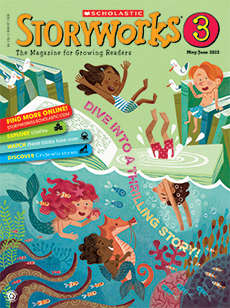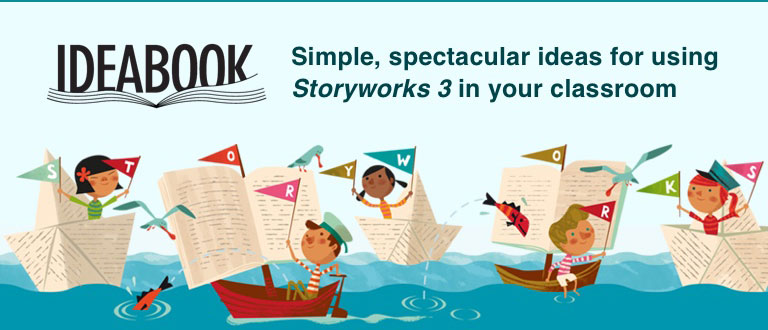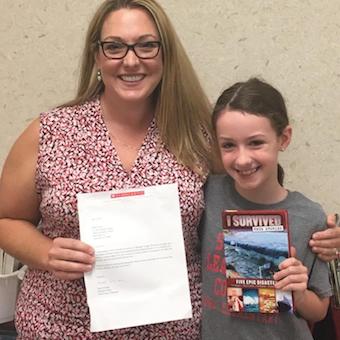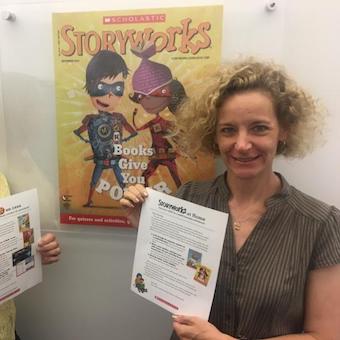Dear teachers,
My name is Alex Winnick, and I'm the Associate Editor of Storyworks 3. Like many of you over this past year, I've looked for new projects to pursue while spending time at home. In October 2020, my roommates and I decided to take on an ambitious project: composting! So I was thrilled when we featured the story "The Day the Worms Moved In" in our March/April issue. I felt as excited about turning our food scraps into soil as Maddie's mom feels in the story. Best of all, we were composting without keeping worms in the house! Below are a few questions and answers, as well as photos, from my composting adventure. I hope you share them with your students when celebrating Earth Day or reading our fabulous story "The Day the Worms Moved In!"
What is composting?
Composting is a way of recycling vegetables or other organic matter into a material that can be used to fertilize plants. Simply put—composting takes leftover food and turns it into soil!
Why should people compost?
Almost 40% (close to half!) of food in America ends up being thrown out. When food gets wasted, it takes up space in landfills and generates methane, a gas that contributes to global warming. By composting the food, we can keep it out of landfills and transform it into soil that helps us grow more healthy food!
What do you use to compost?
My roommates and I bought a composting tumbler, which is basically a big box that rotates on wheels. We assembled the tumbler and moved it into our small backyard in Brooklyn, New York.
What sorts of things do you compost?
We compost almost all of our food scraps. That includes items like: egg shells, coffee grounds, stale bread, fruit and vegetable peels and stems, and more. We don't compost meat or fish. We also don't compost any dairy products, like milk or yogurt.
Where do you keep the food scraps?
We use a 5-gallon bucket in our kitchen to store our food scraps. When we fill the bucket, we bring it outside to the tumbler! It usually takes us a couple weeks to fill one bucket.
Do you put anything else in the tumbler?
Yes! In order to compost, you need equal amounts "green" and "brown" materials. Green materials are fresh plant materials that still have some life. We use our food scraps as the green materials. Brown materials are dry plants with no life in them. We use lots and lots of leaves from the backyard and sidewalk as our brown materials. We collected enough during the fall to last all year!
What happened after you started composting?
After setting up our tumbler, we spent the next several months adding equal parts green and brown materials. Every few weeks we would give the tumbler a big spin. This helped mix all of the materials together and make sure that enough air was getting in. Air helps the microorganisms break down the food waste.
Do you use worms like Maddie and her mom?
We didn't put any worms inside our tumbler, but it is designed with small holes that let them in. I've seen lots of bugs inside, but I haven't seen a worm yet. I'm hoping that one or two will find a way to crawl up and help break down our food!
Did it work?
The adventure isn't over! Turning food scraps into soil takes time. We've noticed many changes in the tumbler but we haven't gotten to soil yet. When we do, we're excited to use the soil in order to grow some herbs in our backyard this summer. And once our tumbler is empty, we can start the whole process over!
Composting has been a fun and fascinating project, and we're excited to see what happens next! If you or your students have any questions, please don't hesitate to ask them by emailing me at [email protected] or by posting in our Facebook group. Please also let us know if you're embarking on your own composting adventure! My roommates and I found this New York City composting guide very helpful. Its composting tips work in any setting.
Happy Earth Day to you and your students!
Recent Posts
-
July 22, 2022
Check Out What's Coming in September
-
May 24, 2022
Genius Teacher Ideas: Using Storyworks 3 Across Curriculum
-
May 17, 2022
Genius Teacher Ideas: Multi-Class Debate with Storyworks 3
-
May 05, 2022
Genius Teacher Ideas: Test Prep with Storyworks 3
-
March 17, 2022
Celebrate National Poetry Month!
-
January 10, 2022
Sneak Preview! Your February 2022 Issue
-
December 14, 2021
Homestretch to the Holidays
The Storyworks 3 Ideabook is for teachers looking for awesome ideas on all things ELA. It’s where you’ll find fresh, creative, practical ways to use the phenomenal resources available to you through this award-winning magazine.







